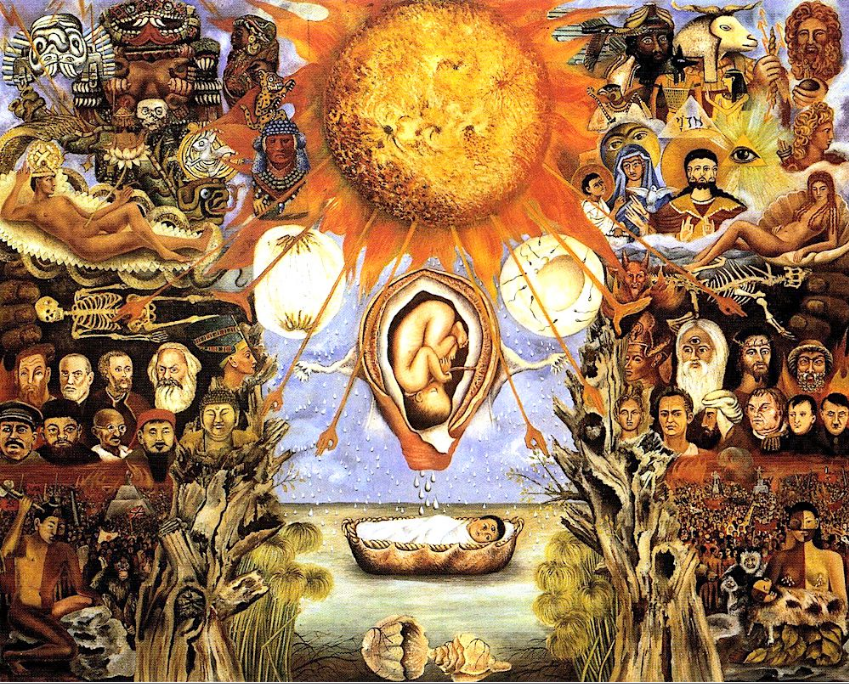Frida Kahlo presents an interesting case of creating surrealistic artworks despite generally denying it herself. Apart from many artworks, which can be considered controversial regarding their surrealistic features, her work Moses (Figure 1) undeniably contains a surrealistic sense and message. The painting reflects her understanding of Moses and Monotheism, the book by Sigmund Freud, whose works on psychoanalysis served as soil for surrealism (Frida Kahlo and her paintings). Since the book refers to the possible origins of modern monotheistic religions, Kahlo’s work also depicts the religious theme – a cycle of life and death.
In the painting, an abandoned baby with a third eye on his forehead is put in the center. This baby’s face resembles Kahlo’s husband; she always pictured him in her other paintings with the third eye, which stands for wisdom. In the foreground, the water spurts from the conch, indicating that a baby is about to be born; Kahlo called it a “symbol of love” (Frida Kahlo and her paintings). Everything happens under the sun, with gods, heroes, and other people standing on the sides. In addition, branches extend from the dead trees, while the hands of death can also be seen in the background. The latter symbols Kahlo frequently used in her other painting to refer to the mentioned never-ending cycle.
The number of imagery symbols and their combination makes the work surreal. In one painting, an attempt to unify gods and men, birth and death represents a unique, insightful vision of life itself. The picture also incorporates primitivism (an influential factor in surrealism’s development) in the form of tribal features and polytheistic references. In my opinion, Kahlo should be considered a surrealist, even despite her objections. Her main argument of simply depicting her reality concerns solely her vision of her own artworks; while it might be a reality for her, it is not so for other viewers. I believe that for others, her works present the flight of a dream above reality, which looks genuinely surreal.
Reference
Frida Kahlo and her paintings. (n.d.). Frida Kahlo: Paintings, biography, quotes.
Appendix A
